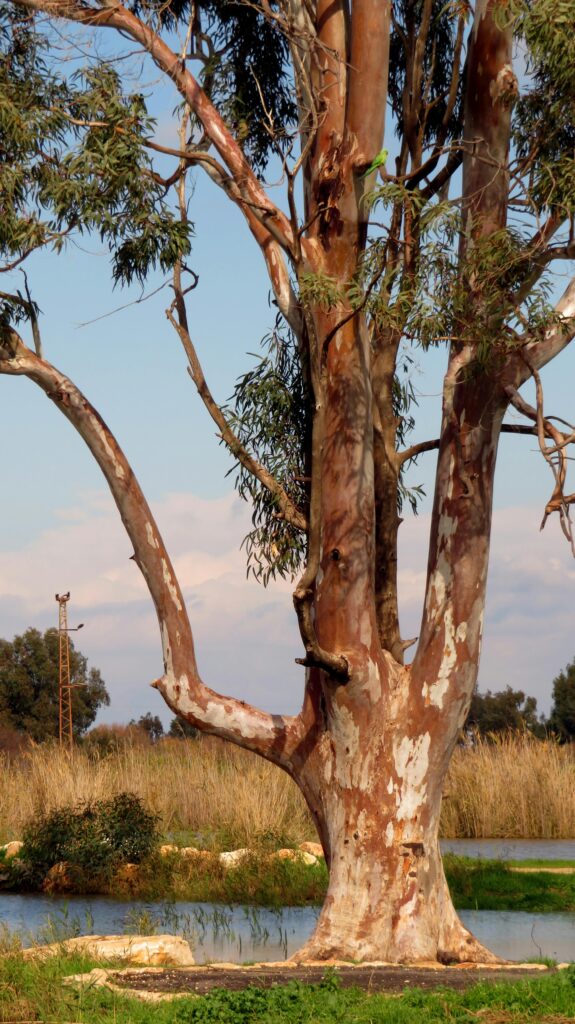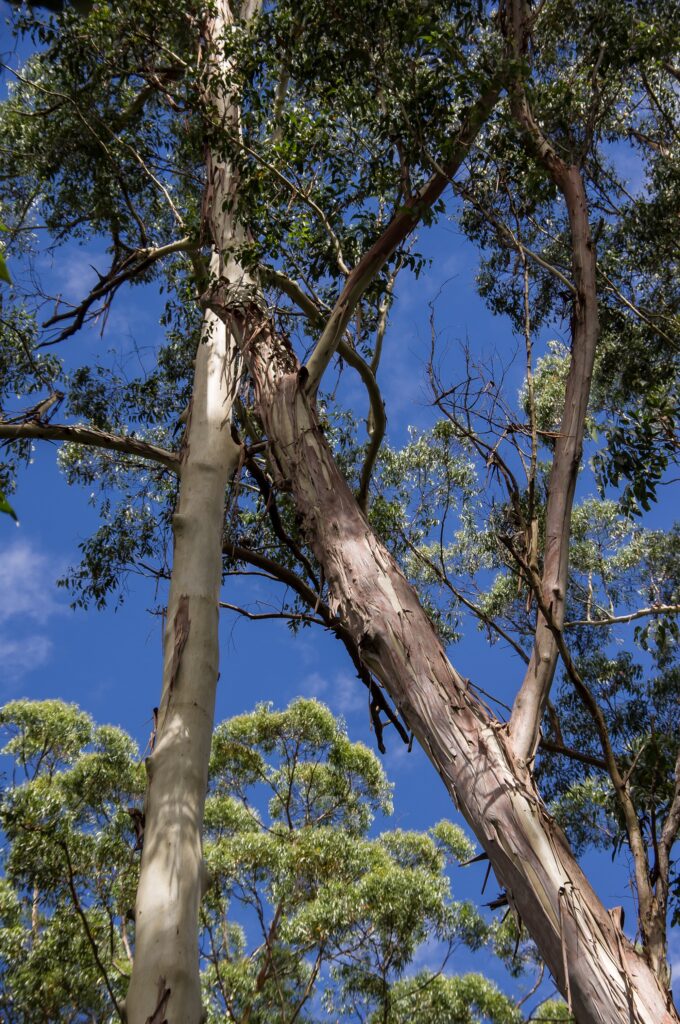Your basket is currently empty!

Scientific Name: Eucalyptus globulus
Common Names: Blue Gum, Tasmanian Blue Gum
Anatomy of Eucalyptus
Eucalyptus trees are a diverse genus of flowering trees and shrubs, predominantly native to Australia. Here’s a closer look at their anatomical features:

Leaves: Eucalyptus leaves are usually long, narrow, and can be either opposite or alternate. Juvenile leaves are often rounder and larger compared to the lance-shaped adult leaves. The leaves contain oil glands, which release the characteristic eucalyptus scent when crushed.
Bark: The bark of Eucalyptus trees can vary significantly between species. Some have smooth bark that peels away in ribbons, while others have rough, fibrous, or flaky bark.
Flowers: Eucalyptus flowers are distinctive, lacking petals but featuring numerous showy stamens that can be white, cream, yellow, pink, or red. They are typically pollinated by birds and insects.
Fruit: The fruit is a woody capsule known as a gumnut, which contains numerous tiny seeds. The gumnuts open to release seeds when mature.
Medicinal and Important Properties
Eucalyptus has a variety of medicinal and practical applications:

- Eucalyptus Oil: Extracted from the leaves, eucalyptus oil is widely used for its antiseptic, anti-inflammatory, and decongestant properties. It’s a common ingredient in cough syrups, lozenges, ointments, and inhalants.
- Respiratory Health: Eucalyptus oil is well-known for its effectiveness in treating respiratory conditions. Inhalation of the oil can relieve symptoms of asthma, bronchitis, and sinusitis.
- Antiseptic and Antibacterial: Due to its antimicrobial properties, eucalyptus oil is used in wound care to prevent infection. It is also used in dental care products to reduce plaque and gum disease.
- Pain Relief: The oil can be applied topically to relieve muscle pain and joint inflammation.
- Timber and Paper: Eucalyptus wood is used in construction, furniture making, and paper production. Its fast growth rate makes it an attractive option for these industries.
Why Eucalyptus is Banned in India?
Despite its many benefits, the cultivation of Eucalyptus has been banned in some parts of India. Here are the primary reasons for this:
- Water Consumption: Eucalyptus trees are known for their high water consumption. They draw significant amounts of water from the soil, which can lead to the depletion of local water resources, especially in arid and semi-arid regions. This makes them a controversial choice in water-scarce areas.
- Allelopathy: Eucalyptus trees release chemicals into the soil that inhibit the growth of other plant species nearby. This can reduce biodiversity and negatively impact local ecosystems.
- Soil Degradation: The deep-rooted nature of Eucalyptus can lead to soil erosion and degradation, particularly when large plantations are established.
- Impact on Agriculture: The high water usage and allelopathic effects of Eucalyptus can adversely affect nearby agricultural lands, reducing crop yields and soil fertility.
The plantation of eucalyptus has been a controversial issue in India.

- Karnataka Ban: The Karnataka state government banned the cultivation of eucalyptus in 2017, citing concerns about its impact on water resources and biodiversity.
- Legal Challenges: This ban faced legal challenges, and the Karnataka High Court later stayed the notification, allowing further consideration of the issue.
- Developments: In December 2023, the Karnataka government indicated plans to lift the ban, at least for areas surrounding paper mills, to support the paper industry.
Therefore, the situation regarding eucalyptus plantation in India is complex and subject to ongoing debate and potential changes in policy.
Conclusion
Eucalyptus is a remarkable plant with a wide range of uses, from medicinal applications to industrial purposes. However, its environmental impact cannot be overlooked. The debate over its cultivation highlights the need for careful consideration of ecological balance and sustainable practices. By understanding both the benefits and drawbacks of Eucalyptus, we can make informed decisions about its place in our landscapes and industries.